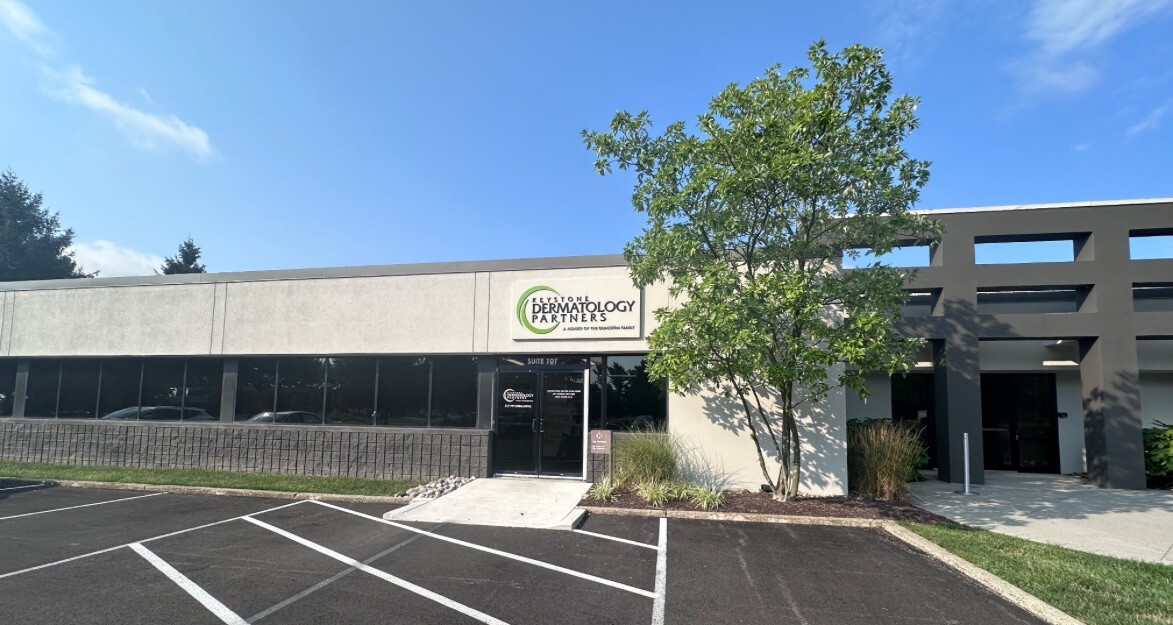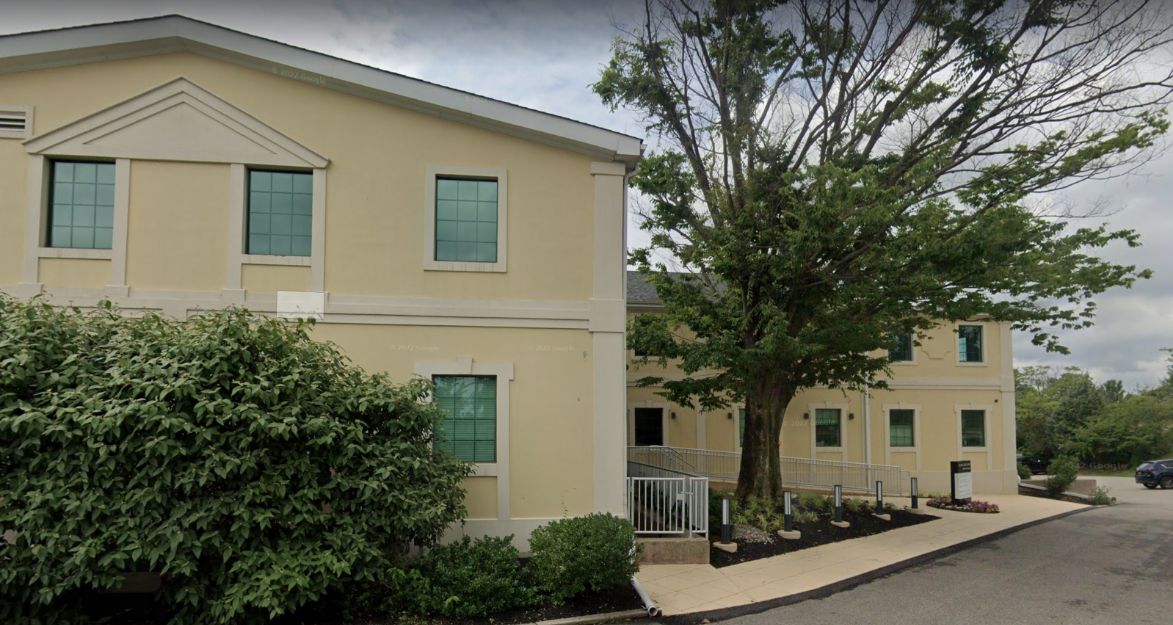Cryosurgery
Cryosurgery: A Precise and Effective Dermatological Treatment
Cryosurgery, also known as cryotherapy, is a cutting-edge medical procedure that uses extremely low temperatures to freeze and eliminate abnormal or diseased tissues. This minimally invasive technique is a popular choice in dermatology for treating a range of skin conditions, such as warts, skin tags, and certain precancerous lesions.
During cryosurgery, a cryoprobe or cotton swab is employed to apply liquid nitrogen or another cryogen directly to the targeted area. The intense cold freezes the water within the cells, forming ice crystals that rupture the cell membranes, ultimately destroying the treated tissue. Over time, the damaged tissue sloughs off, making way for healthy tissue to regenerate.
This quick procedure, usually completed in a few minutes per lesion, is conducted in a dermatologist's office. Patients may experience mild discomfort, redness, and swelling after the procedure, but these symptoms typically resolve within a few days. Cryosurgery is highly regarded for its precision, minimal scarring, and rapid recovery period.
Examples of Cryosurgery
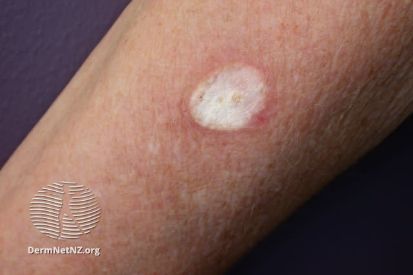

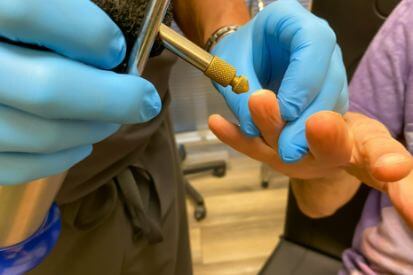
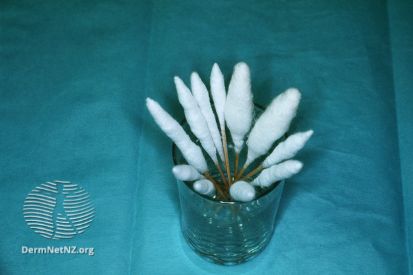
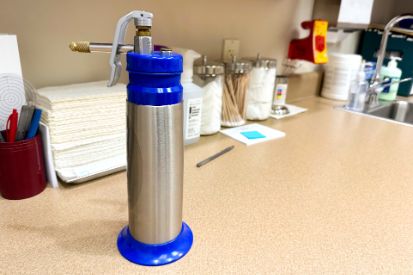
Cryosurgery Explained
As the treated area thaws, the damaged cells undergo necrosis and are eventually sloughed off, making cryosurgery effective for various skin conditions such as warts, skin tags, and certain precancerous lesions. The procedure is minimally invasive, often done in an outpatient setting, and offers a convenient and efficient approach to address specific dermatological concerns.
Benefits of Cryosurgery
- Efficient Tissue Removal: Cryosurgery provides a swift and efficient means of removing unwanted or abnormal tissues, such as warts, skin tags, and precancerous lesions.
- Minimally Invasive: The procedure is minimally invasive, typically requiring only the application of liquid nitrogen, minimizing discomfort and the need for incisions.
- Versatility: Cryosurgery is versatile and can be used to treat a wide range of dermatological issues, making it a valuable option for various skin conditions.
- Low Risk of Scarring: The controlled freezing and subsequent thawing of tissues in cryosurgery often result in minimal scarring compared to traditional surgical methods.
- Outpatient Procedure: In many cases, cryosurgery can be performed on an outpatient basis, allowing for convenient treatment without the need for a hospital stay.
How Keystone Dermatology Partners of Philadelphia Can Help: Cryosurgery
Our dedicated team is committed to understanding your unique dermatological needs and developing a customized treatment plan to help you restore your skin’s health and appearance. With our expertise, you can feel confident in achieving beautiful, healthy skin.
We take pride in providing personalized care tailored to each patient’s specific needs. Book your consultation today to discover the transformative benefits of cryosurgery and enjoy the radiant skin you deserve.
Cryosurgery FAQs
Patients may experience some discomfort during cryosurgery, typically described as a sensation of cold followed by a stinging or burning feeling as the tissue freezes. However, the procedure is generally well-tolerated, and any discomfort is temporary.
The healing timeline varies depending on the extent of the procedure and the individual's skin. In most cases, the treated area will scab over within a week, and the scab will eventually fall off, revealing healed skin. Complete healing may take a few weeks.
While cryosurgery is considered a safe procedure, there are potential side effects, including redness, swelling, blistering, and changes in skin pigmentation. Infection and scarring are rare but possible. Your dermatologist will discuss potential risks during the consultation.
Cryosurgery is effective for a variety of skin conditions, including warts, skin tags, and certain precancerous lesions. However, its suitability depends on the specific characteristics of the condition. Your dermatologist will assess and determine if cryosurgery is the appropriate treatment for your case.
The duration of a cryosurgery appointment varies based on the extent and number of areas being treated but is generally relatively brief, often lasting between 15 to 30 minutes. The procedure is efficient, and patients can typically resume their daily activities shortly after treatment.
What to Expect at Your Cryosurgery Appointment
The dermatologist will apply liquid nitrogen to the targeted areas using a specialized tool, causing controlled freezing of the tissues. While you may experience a sensation of cold and discomfort during the procedure, it is typically well-tolerated. Post-treatment, your dermatologist will provide aftercare instructions, which may include recommendations for wound care and any potential side effects.
Follow-up appointments may be scheduled to monitor your healing progress and ensure the best possible outcome for your skin condition.
How to Prepare for Cryosurgery
It's advisable to arrange for transportation, as there might be some discomfort after the procedure, and driving immediately afterward may not be recommended. Lastly, follow any pre-operative instructions provided by your dermatologist, such as avoiding the use of creams or lotions on the targeted areas prior to the appointment.
This thoughtful preparation ensures a smooth and well-informed experience as you undergo cryosurgery to address your skin concerns.
Planning for Recovery after Cryosurgery
The healing timeline varies based on the extent of the procedure and the individual's skin, but in most cases, the treated area will scab over within a week. The scabbing will eventually fall off, revealing the healed skin underneath.
It's essential to follow your dermatologist's post-operative instructions diligently, including avoiding sun exposure and practicing proper wound care, to optimize the healing process and achieve the best possible results. Regular follow-up appointments may be scheduled to monitor your recovery progress and address any concerns.
Featured Blogs

- Skin Cancer
- General Dermatology
- Sun Safety
Use this blog as a guide to help you choose the most effective sunscreen to protect your skin.
Read More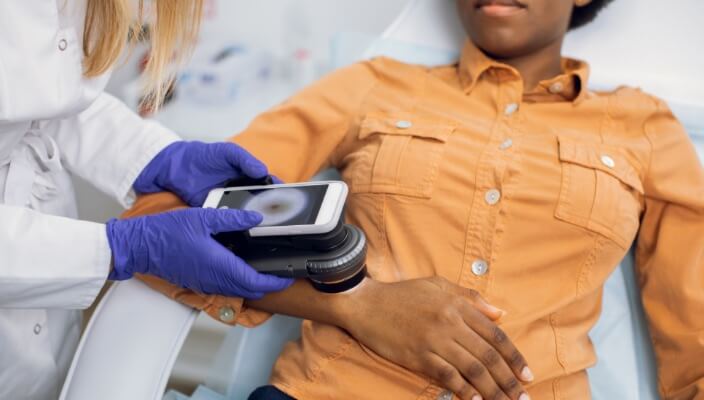
- Skin Cancer
- Skin Exams
It’s time to face the facts: skin cancer can develop in individuals of all skin colors, including those with darker skin tones.
Read More
- Skin Cancer
- General Dermatology
- Skin Exams
Navigating the landscape of Total Body Skin Exams: Uncover the comprehensive process, understand why it matters for skin health, and gain insights into what to expect during these essential dermatological examinations.
Read More
